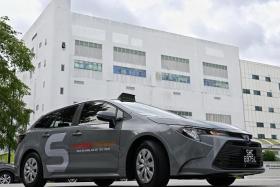Airshow buoyancy masks turbulence ahead
Asia is fastest growing aviation market, but challenges of infrastructure, fares and fuel remain
The biennial Singapore Airshow has brought more than 1,000 companies together for the exhibition near Changi airport.
Manufacturers are targeting the Asia-Pacific region as the world's fastest-growing aviation market - South-east Asia has nearly as many aircraft on order as it has planes flying.
But aviation bosses gathered here this week may want a serving of scepticism alongside the champagne.Higher oil prices, creaking infrastructure and too many seats will limit the gains from the regional boom in cheap flights.
Full-service carriers may feel turbulence too.
Delegates mingling at the Changi exhibition centre can be excused a little back-slapping.
Trade body IATA says the world's airlines have now been profitable since 2010.
This year should mark the fourth in a row with returns exceeding the cost of capital - no mean feat in a business that is notoriously prone to value destruction.
And the industry is shifting east. Asia is already the world's fastest-growing aviation market. By 2036, IATA estimates Asia will have roughly 3.5 billion passengers - not far from the global total now. An expanding and more affluent middle class will travel more.
There are a few worrying blips on the radar for Asia's airlines, however, including the recent rise in oil prices.
Low-cost operators, which have upended South-east Asian air travel, would be particularly vulnerable if fuel costs rise further.
Many, including Malaysia's AirAsia, hedge less aggressively than traditional players.
Fuel surcharges also make for bigger increases on cheap fares.
Meanwhile, larger carriers like Singapore Airlines and Cathay Pacific have had to contend with rising pressure from China and the budget players.
Both have warned of yield pressures - meaning they make less on each passenger per mile - as competition keeps fares down.
And everyone is grumbling about infrastructure: in particular, a lack of landing slots and pilots, and higher costs at new airports, many of them privately owned.
Oversupply, another perennial worry, is less troubling than it looks, since some aircraft purchases have been quietly postponed.
The best case, especially in the Asean region, is real liberalisation. This would follow on from 2016's so-called "Open Skies" agreement which is supposed to create a free market in the region for routes and prices.
While in the short run that should spur yet more intense competition, it could also create healthier players by finally spurring consolidation among a crowd of low-cost carriers. - REUTERS
Get The New Paper on your phone with the free TNP app. Download from the Apple App Store or Google Play Store now



